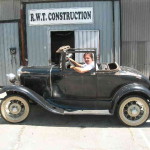Make Sound Choices for the Acoustic Treatment of Your Home Recording Studio
In recording studios, not all acoustic padding, panels, absorbers and diffusers are equal. There is so much more to an acoustic treatment than just padding the walls with foam. To produce a true and accurate sound in your home studio, follow some advice about the acoustic treatment that should be applied during the design and construction phase.
What is Acoustic Treatment?
Soundproofing your home recording studio is not the same as an acoustic treatment. Soundproofing minimizes the amount of sound that leaks in or out of the room. It is often called sound isolation.
Acoustic treatment is about minimizing – or even balancing – the amount of echo and reverberation within the studio itself. Sometimes the sound and “interference” of the room that is picked up by microphones can make or break a recording.
Good acoustic treatment improves the quality of a recording so it most closely matches the sound of the performance.
In an untreated studio, or a poorly treated one, sound waves from instruments and voices bounce off surfaces in the room and then collide with fresh sound waves coming from the instruments and voices. This diminishes the nature and quality of the recording. No amount of computer filtering, EQ and mixing can get rid of it.
Acoustic Treatment Methods
Absorbers, diffusers and reflectors can be used in a studio to give the room the desired sound characteristics for recording. You can spend a fortune on expensive musical equipment, but if your studio has not been treated acoustically, you will not be able to capture and record the true sound of a performance.
Excessive room reverb can be addressed by carpeting the studio floors and incorporating a few soft furnishings in the room. Acoustic tiles can be applied to the walls to eliminate flutter echoes. Foam absorbers are effective in reducing the amount of sound reflection from ceilings.
Absorbers
Depending on their design, rooms resonate at different frequencies, but in every case you are likely to hear a particular tone long after the original sound has stopped. This effect is called ringing. Absorbers help to minimize echo and ringing.
Different materials have vastly different absorption capabilities. Rigid fiberglass is the most effective material to absorb sound in the mid to high frequency range. These panels are more effective than acoustic foam of the same thickness.
Absorbers used for the low frequency range are called bass traps. Most rooms have peaks and dips throughout the entire bass range and these vary at different locations in the room. At all low frequencies, sound waves collide and combine to cause acoustic interference. The only way to eliminate these peaks and dips is to reduce the reflections that cause them. Apart from flattening the low frequency response of the room, bass traps reduce modal ringing. Modal ringing causes some bass notes to sustain longer than others and this affects the clarity of the recording.
Diffusers
Diffusers reduce or eliminate sound reflections in a room. They are usually used in combination with absorbers to avoid a room sounding completely “dead” when all surfaces are covered with absorbent material.
The ideal studio is acoustically treated with a mix of diffusive and absorbent materials.
Diffusers do not absorb sound waves; they scatter them in different directions. Well designed diffusers ensure a more open and natural sound. They have another useful purpose in recording studios: they reduce sound leakage from instruments that are being recorded at the same time in separate microphones.
Consult a Recording Studio Expert
Get the acoustic treatment done well when your home studio is being designed. If you want to remodel a room in your home to become a recording studio, an experienced professional contractor in this field can provide you with a turnkey solution that covers the entire process, right down to plugging in equipment.
 “Romney Tripp started construction in 1977 and formed RWT Design & Construction in 1992, eventually setting up the shop in Burbank. From the mid 1980’s Romney has been working on building recording studios as well as…” Read more.
“Romney Tripp started construction in 1977 and formed RWT Design & Construction in 1992, eventually setting up the shop in Burbank. From the mid 1980’s Romney has been working on building recording studios as well as…” Read more.
Creative Commons Attribution: Permission is granted to repost this article in its entirety with credit to RWT Design & Construction.


No Comments
Sorry, the comment form is closed at this time.